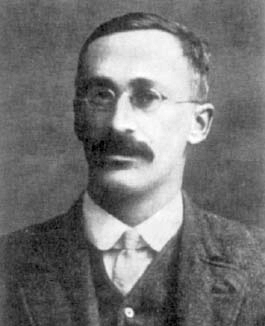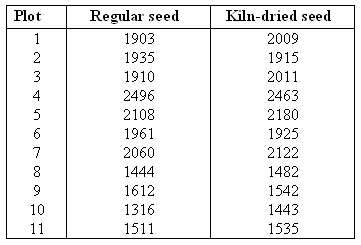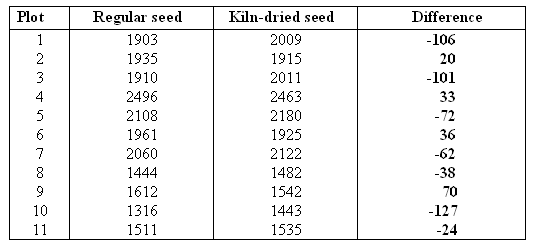10.9: Assignment- Matched Pairs
- Page ID
- 14176
The purpose of this activity is to give you guided practice in carrying out the paired t-test and to teach you how to obtain the paired t-test output using statistical software. Here is some background for the historically important data that we are going to work with in this activity.
Background: Gosset’s Seed Plot Data

William S. Gosset was employed by the Guinness brewing company of Dublin. Sample sizes available for experimentation in brewing were necessarily small, and new techniques for handling the resulting data were needed. Gosset consulted Karl Pearson (1857-1936) of University College in London, who told him that the current state of knowledge was unsatisfactory. Gosset undertook a course of study under Pearson, and the outcome of his study was perhaps the most famous paper in statistical literature, “The Probable Error of a Mean” (1908), which introduced the t distribution.
Since Gosset was contractually bound by Guinness, he published under a pseudonym, “Student”; hence, the t distribution is often referred to as Student’s t distribution.
As an example to illustrate his analysis, Gosset reported in his paper on the results of seeding 11 different plots of land with two different types of seed: regular and kiln-dried. There is reason to believe that drying seeds before planting will increase plant yield. Since different plots of soil may be naturally more fertile, this confounding variable was eliminated by using the matched pairs design and planting both types of seed in all 11 plots.
The resulting data (corn yield in pounds per acre) are as follows:

We use these data to test the hypothesis that kiln-dried seed yields more corn than regular seed.
Because of the nature of the experimental design (matched pairs), we are testing the difference in yield.

Note that the differences were calculated: regular – kiln-dried.
Question 1:
State the appropriate hypotheses that are being tested here. Be sure to define the parameter that you are using.
Instructions
Click on the link corresponding to your statistical package to see instructions for completing the activity, and then answer the questions below.
R | StatCrunch | Minitab | Excel | TI Calculator
Question 2:
Are the conditions that allow me to safely use the paired T-test satisfied? Support your answer by using appropriate visual displays.
Question 3:
Based on the visual display that you produced for answering the previous question, does it seem like there is some evidence in the data in favor of the alternative hypothesis? Explain.
Question 4:
Carry out the paired t-test, state the test statistic and P-value, and state your conclusion in context.
Contributors and Attributions
- Concepts in Statistics. Provided by: Open Learning Initiative. Located at: http://oli.cmu.edu. License: CC BY: Attribution

